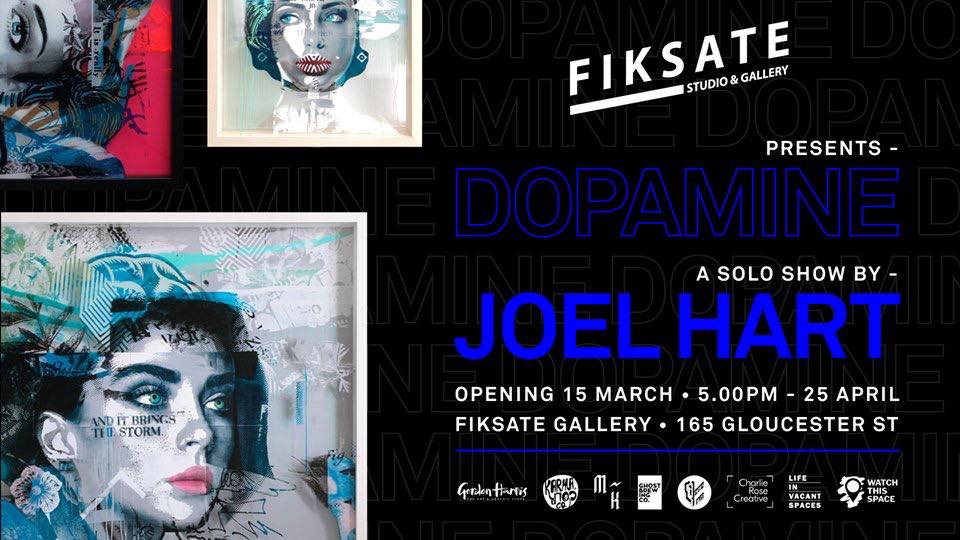In basketball they talk about being a triple threat: a player who can score baskets, defend, and provide assists for others. This concept is fitting when it comes to Christchurch artist and designer Joel Hart, not just because he has his own history in the sport of hoops, but because he is also a true all-rounder. A talented and popular artist, whose captivating work is found on walls both in the streets and in galleries, he is, to top it off, a heck of a nice guy, unassuming and relatable. It has been a goal to sit down with Joel to discuss his work and career for a while, and the opening of his new show Dopamine at Fiksate provided a perfect opportunity. For an artist whose work embraces a number of processes and materials, and as a figure who perhaps represents an alternative entry into the worlds of muralism and urban contemporary practice, there was no shortage of conversation…
What was the inspiration for the title of this show, Dopamine?
Where did it come from? I can’t actually remember…
I did a bit of research, and from what I have read, bearing in mind my limited scientific knowledge, dopamine refers to chemical neurotransmitters in the brain and they impact a range of emotions and capabilities, including the ability to see and obtain rewards, which was interesting to me, is that what you had in mind when you came up with the title?
Yeah, it is that idea of the visual experience, when you see something cool, and it releases that dopamine feeling, and I guess that’s how I like to explain my work, it’s very much about a visual experience…
You see your work as a very visual, visceral experience, and the immediate response triggering an emotional response?
Yeah, I think so, so that’s where Dopamine came from.
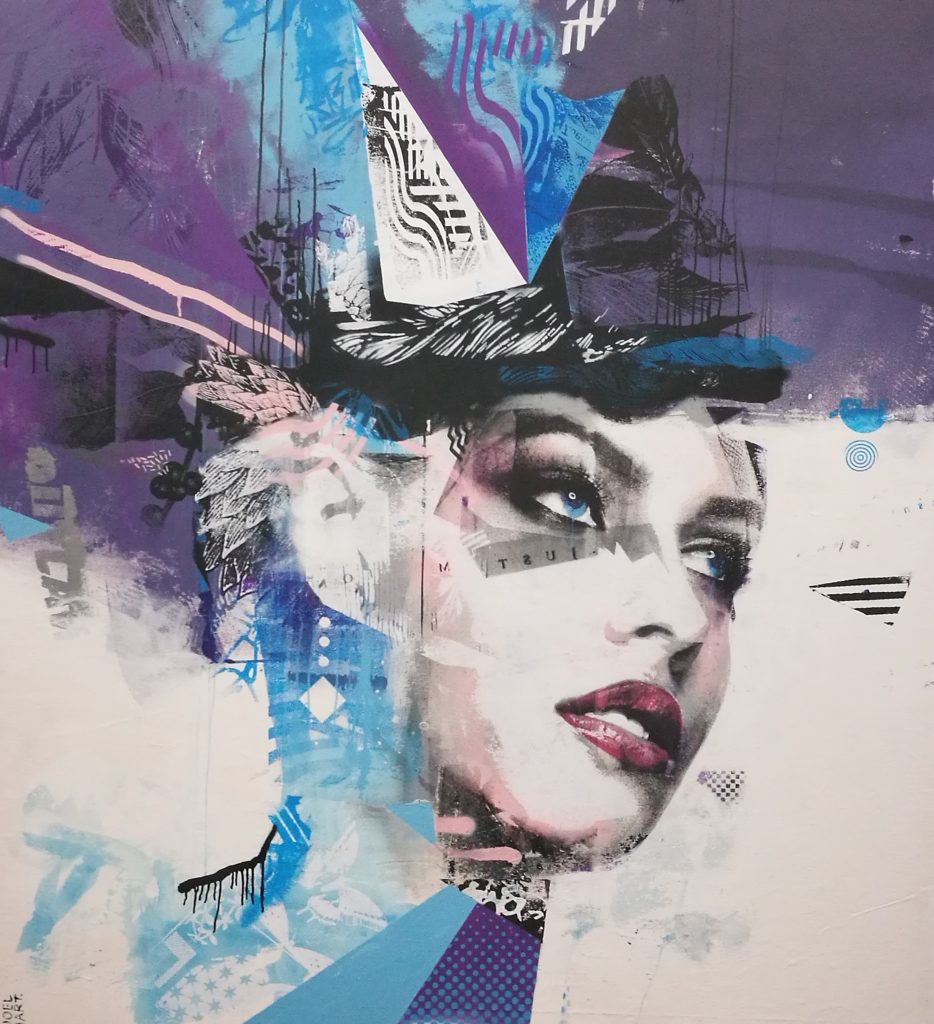
The show opens March 15th at Fiksate, and having talked to you for a while about a solo show, it feels like a long time coming, do you feel that way?
Yeah, it has been over three years since I had my last solo show, so all these ideas that I’ve been pulling together, it has been a long, long time coming. But it also feels like it has snuck up really quickly as well…
That long gap must mean there has been a fair amount of progression in your work, which must be more satisfying than successive shows of the same stuff, but at the same time, it must mean that there is a lot to try and condense into one coherent show that explains that progression. The ability to have a solo show in a dedicated urban contemporary space, like Fiksate, must be satisfying too. Did you feel a different responsibility than you feel painting a mural, having work in a group show, or even a booth in an art fair, a responsibility to have a more coherent, cohesive body of work and presentation?
Yeah definitely, you want to be tying it all together as a consistent body of work, which is really hard to do, because I’m constantly working with a lot of different materials, I’m pushing towards sculptural elements, there are layered works, and there are works on metal as well. I’ve tried to work around the female portraits, which is mainly what I do anyway, so that consistency ties it all together, the themes are similar…
The female face has long been a central icon of your work, what is the allure? Is there an inherent commentary?
I was thinking about that the other day, and it sort of stems from my journey as a graphic designer building into the art works. I’ve worked for magazines, I’ve done a bit with photographers and fashion magazines, I worked for a student magazine as well, which was more of a grungy, underground culture, and then I’ve worked in screen printing as well, so it all plays a part, and the images I work with have come from various elements of all of those worlds and experiences…
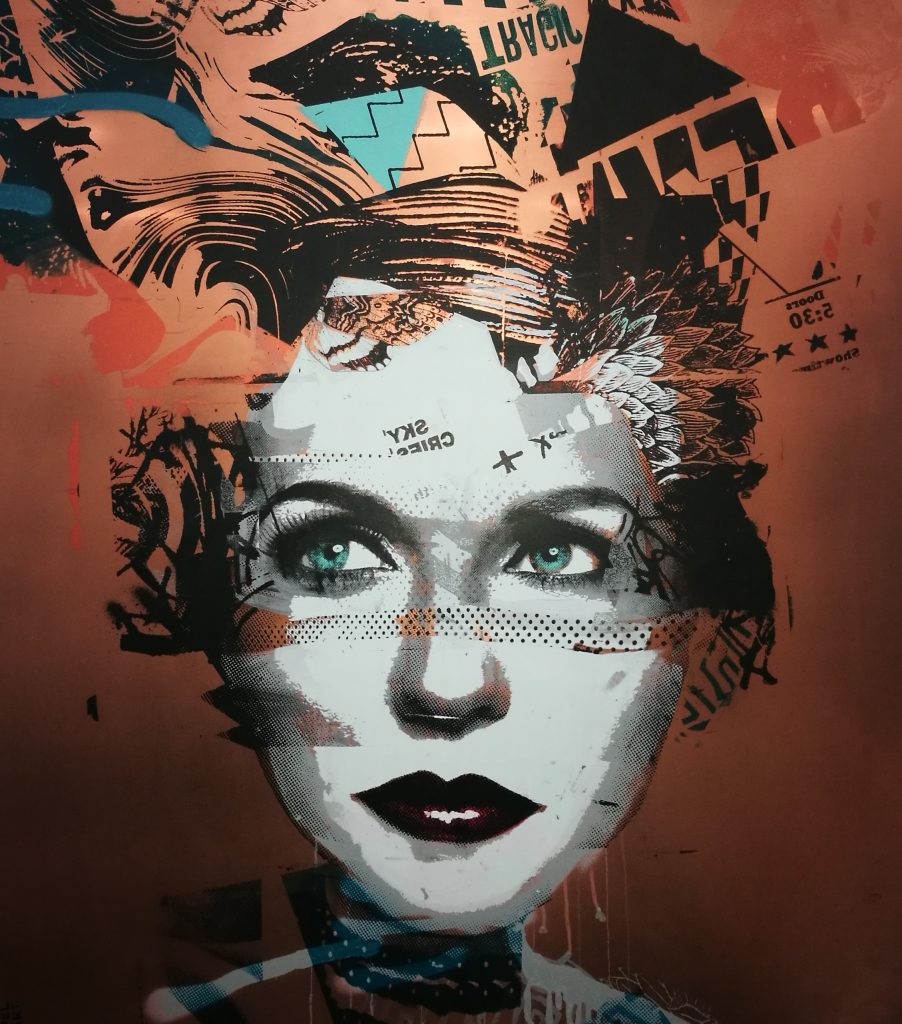
Does the imagery work in relationship with the formal material approaches? The use of layers, the reflective surfaces, the fragmented effects, do they intentionally combine with the beautiful faces, and the other references to make a statement?
Yeah, a little bit, the faces come from a way to build on my stencil stuff. The face really builds the emotional quality of the works, and that’s why I started to build around those images. That probably doesn’t answer your question!
Are the faces you depict drawn from media, like magazines or advertising?
Yeah, a little bit, I suppose that is my background, commercial art, design…
Have you ever considered photographing subjects yourself?
It has always been on the list of things to do. At the moment I just destroy magazines and images and signs and that sort of stuff and fuse it all together. But maybe being able to focus on a specific angle I want, or a look that I want, and being able to build around that from the start will be a lot easier to make a more consistent look, rather than pulling a lot of stuff from everywhere. Sometimes it is hard to build a narrative around a piece when you’ve got all this stuff floating around. I could pretty much build an image from this room, I will see it in my head, all the objects and signs and textures around us, I will pull it all together, but I guess I have always tied my compositions together by building them around faces.
I recently saw a newer work of yours that depicted a male figure, is that a first? Is there a reason the female face has been a more prominent motif?
I’ve done probably half a dozen male figures, but probably most of my work features female figures. I guess I kind of feel like you get more emotion from female eyes, especially in high fashion photography, the lips are more interesting, I don’t know, I guess that is what I’m more interested in working with. Some of the recent stuff I’m playing with allows me to see my work as a snapshot of a larger story, some of the works in this show have a broader narrative, and the faces I see as just something more to explore the formal elements I’m working with…
Those other elements include text, skulls, animals, patterns, natural elements like flowers and foliage, so what is the relationship between all of those aspects, especially the text, it often seems that a piece of text will have an apparently evocative connotation, but at the same time they can be quite ambiguous in relationship to the other pictorial elements, there is a duality between meaningful and meaningless…
Yeah, I quite like to do that, I will have this idea for the visual side, and then I might hear a line in a song, or see something written in a book, just something small, a couple of lines or something, and I will cut it out, and then the text takes quite a prominent role in the piece.
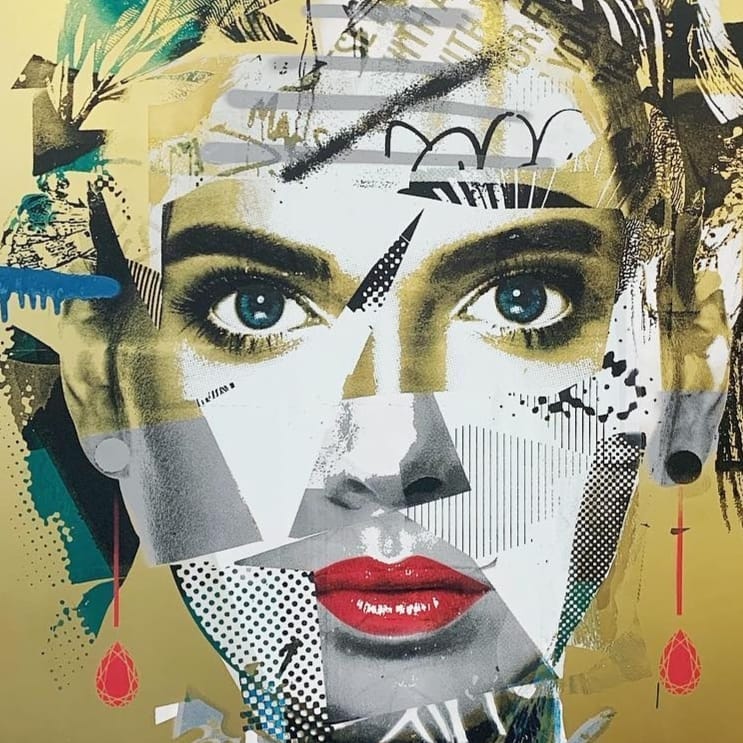
Often the text forms the title of your work, right?
Yeah.
With the typography of the text, are you playing around with that, or using the found visual? Is the text both a signifier as language and as a visual form?
I have always had a big interest in typography, especially in my commercial design work, but the text I use in my work is more often found than a decision to use a trendy, disposable typeface, or even one that is timeless, they are often a bit low-res…
That process of collation, putting all your ideas and images together; scanning, compiling, composing, is there an equal balance between that process and actually producing the work from that sketch?
Oh yeah, there is lots of preparation and planning, so probably sixty percent is that preparation, and forty percent is the application. But in saying that, a lot of the new processes I’m working with, the structures and layers, they are making it more like fifty/fifty…
Within the structures and layers of your compositions there is also a gestural and apparently free-form mark-making, which almost seems at odds with your design background, how open are you towards the end goal when you are making work? Do your sketches reveal how something will look, or can they change over the process?
The scanned image will pretty much be the final product, but in saying that, once I start, I might cut bits out. It is a pretty loose process but the actual appearance of the face, I’ve got the scale right, I’ve got the stencil size right, so that element will generally look like the sketch. Going into my street works, it is really helpful to be able to show a client how a piece will look. So, I guess my smaller works are similar to my larger works in terms of process.
I always remember Porta saying how he respects your ability to solve problems, that you handle things on the fly and find solutions. Is that something you take pride in? Having watched you paint, particularly outdoors, you are use a raft of techniques, from stencils to screen printing directly onto the wall, and in your studio, I imagine it’s even more diverse, because of the extra freedom that kind of space provides. Is a challenge a necessary part of the art-making process for you?
I was saying to someone the other day, I need a challenge, I’m always trying to push the boundaries. It is kind of why I got out of design, because I found I was just doing the same thing over and over. But at the same time, I guess the problem-solving element comes from my design background, where you are solving a problem for a client essentially; they have no collateral or visual presence and you are solving that for them. So, I suppose it comes from that. I guess I like to always explore ideas, and on a wall, you know you will learn something new every time. In my studio works as well, I will be like: ‘Next time I will be able to do that, because I can see where I want to be heading…’
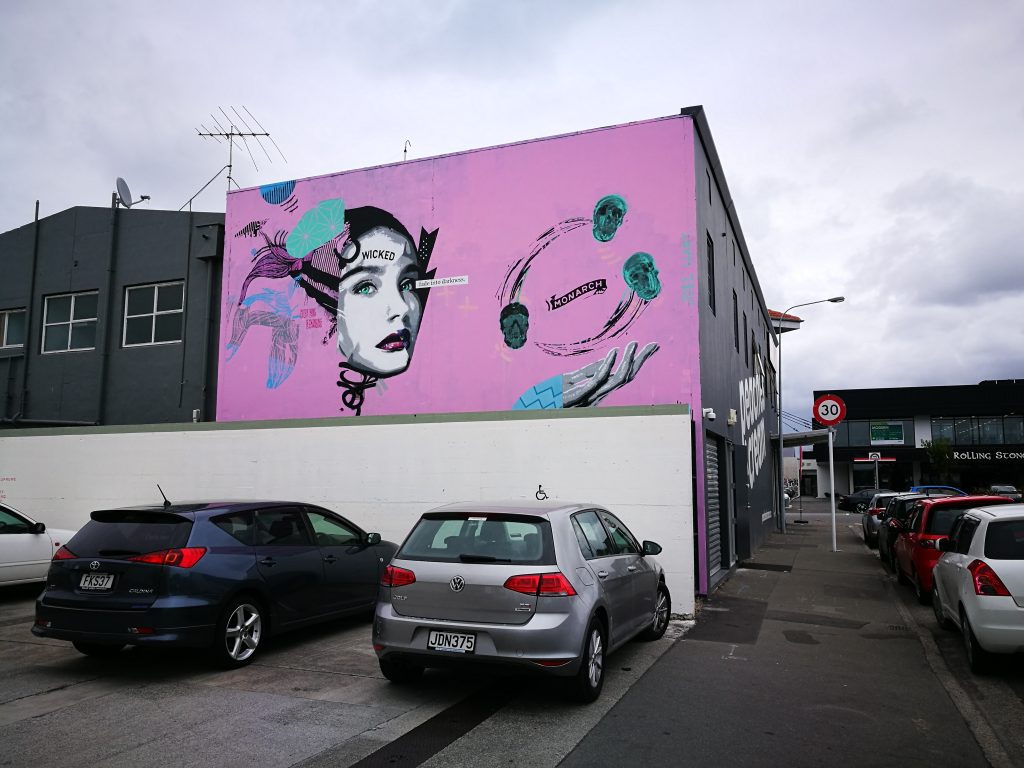
You can see a larger tapestry?
Yeah, like heading into some sculptural work is a massive learning curve for me, working with steel, with timber, engineering stuff…
Is that something you are leaning into yourself? Or do you have people helping you? A lot of artists will work with fabricators and technicians these days, but I feel like you are more hands on, that you would want to be on the tools…
I’m very hands on, but I have very limited knowledge in that area. So, I’m just learning different things, like welding, not that I’ve done much, or steel fabrication, getting ideas and asking questions to see if it is possible to do stuff. The work that comes from it will still be my style, I still want to work in layers, but I am interested in making things that can occupy public space…
Is there any work in Dopamine that represents that direction, or is it a longer-term goal?
It’s probably more of a longer-term goal, but I’ve got a couple of things I’m trying to pull together, so hopefully I can pull it off, but it’s only a couple of weeks away!
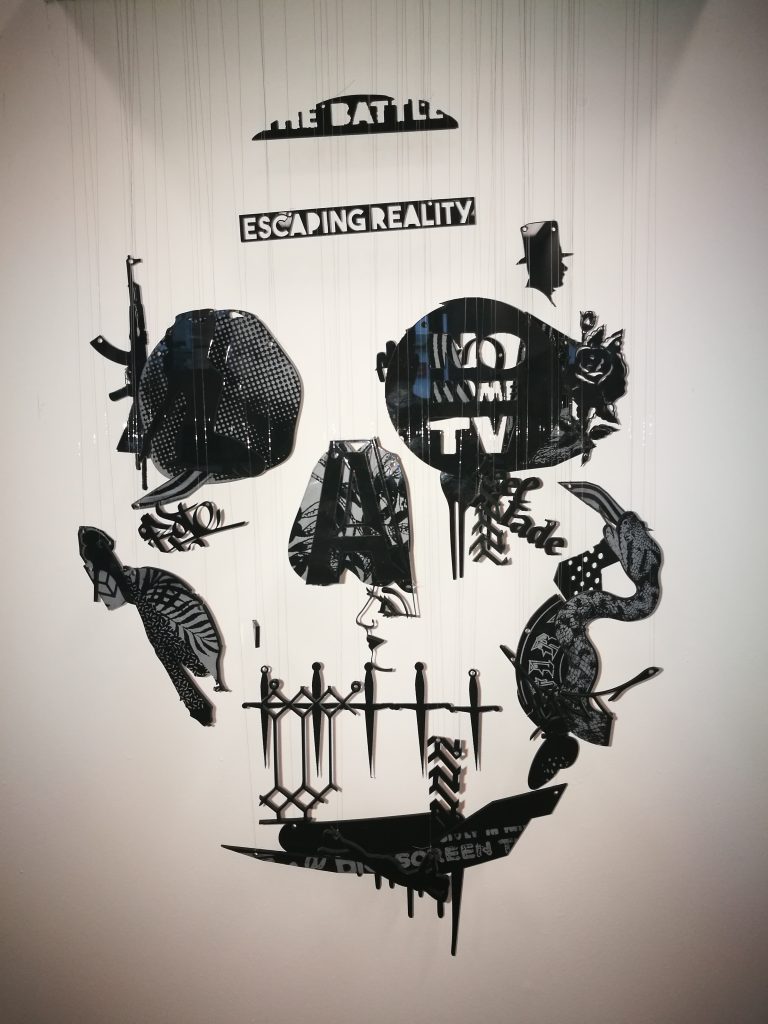
You have been working with layered plastic and copper sheets, what other materials have you been working with? What are you seeking from these different materials, especially as they become more and more important parts of your work?
Yeah, I’ve been playing around with iridescent lighting effects, with film, and mirrors, and just playing with how light can sit in a room. That’s something that has always interested me, spreading the layers out so I can work with shadows, exploring the angles of shadows and light, and how light reflects off surfaces. I’ve always been interested in repurposing things, ever since I was a kid, I loved finding stuff and making something. It’s experimental, playing with different things…
When you decide to use a copper surface or a mirror surface, how do you decide what type of image to use, and how do you develop the relationship between those two elements?
It sort of just comes naturally, because it just starts as a rough sketch and develops from there. I’ve got all this material in my studio that I think will work with something later, so if I know I’ve got a piece of mirror that’s six hundred by six hundred, I can sort of build my composition into that mirror. Often, I will just put something aside, like a rusty bit of steel, and once I start on piece, it will be like, oh that will be perfect for that…
Obviously, you enjoy the ability to experiment with these materials in the studio, but do you prefer that environment to working on a mural? Do they feed into each other, or is there a preference?
At the moment, I’ve been stuck in the studio, so I can’t wait to get outside on a wall. But then when you have been on a wall for a week, you can’t wait to get back to the studio! It’s quite nice to have that balance. And it’s good to have the design, not that I do much at the moment, but it is sometimes quite nice to do some of that, to have a more structured brief.
In terms of public, or street works, you aren’t from a street art background as such, but your work definitely has the urban contemporary aesthetic and obviously stencils form a massive part of your work. Have you ever had a desire to do smaller, intervention-style stuff? More post-graffiti street art, rather than the larger muralism?
I’ve always been interested in it, and being a stencil artist, you would have thought I would have had that background, but I don’t know, I was always inspired by graffiti, but I never really liked the idea of painting someone’s wall, I don’t know! But I love the history and I guess I just have always taken it more as a studio practice…
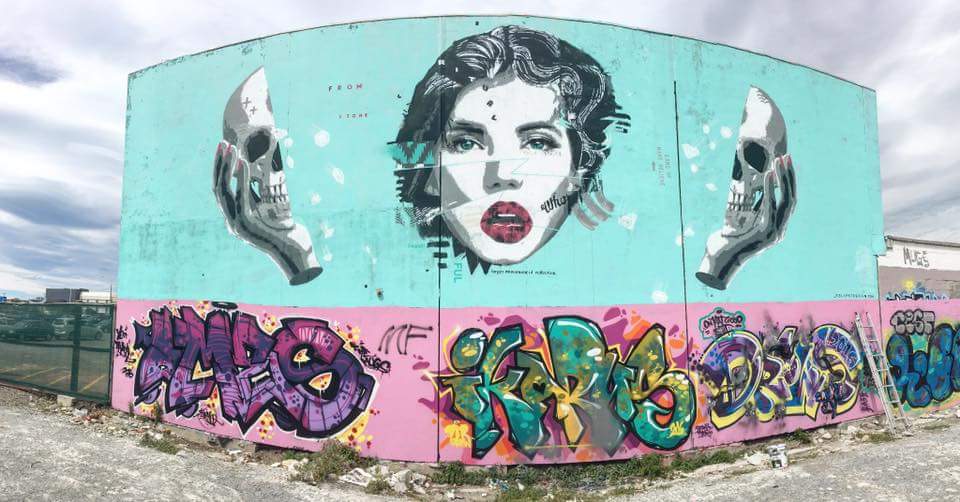
What was your introduction to stencilling? I always ask that, and there always seems to be a common entrance point, like making a stencil of some type of pop culture icon, and then progressing from there. What was your early influence? Was there a particular artist who influenced you? Which stencil artists do you look at now and respect?
I think I saw Rone’s early stencil stuff, it might have been in Wellington? At that stage I was studying graphic design, so I had the tools to make a stencil, and then all my work started to look like that, I used that aesthetic on every project. Then I started cutting and I always just used fashion magazines, because I had them around, and my Nana always had them, as a kid I remember she had stacks of them, so I would cut pictures out, female models in black and white, and I always liked that look for stencil stuff. Logan Hicks was a massive inspiration for me, the massive scale stuff and the process of learning how to break it down…
To break down an image and build it back up? That always fascinated me as well. Did you have those moments where the penny drops with your process and the whole image changes, it unlocks the potential of what you can do with a stencil?
Yeah, it’s amazing right? I got up to twelve-layer stencils at one stage, but I realised I only needed three or four, sometimes only two, I don’t need all those layers to get across what I’m trying to do. Logan Hicks used to do massive thirty-layer stencils, but he basically said you don’t need to do that…
I admire the approach of artists like Flox, Alice Pasquini or C215, where there are only one or two stencil layers, which serve as just like a defining marker over the top, while the gestural painting plays underneath to build the composition…
That’s sort of how I do my larger stuff. I have one stencil essentially and cut the black lines and the grey and white lines, all as one, so its all lines and then you are pretty much colouring in once you take the stencil away…
This all makes me think that your stencil work could be a really nice surprise if it was made on a smaller scale in the streets. The transition between street and studio shows that your work can scale up and down, so it is a real possibility…
It has always been in the back of my mind, I’ve just always been so busy with commissioned works and stuff, it’s just taken off, so I’ve been pushing that…
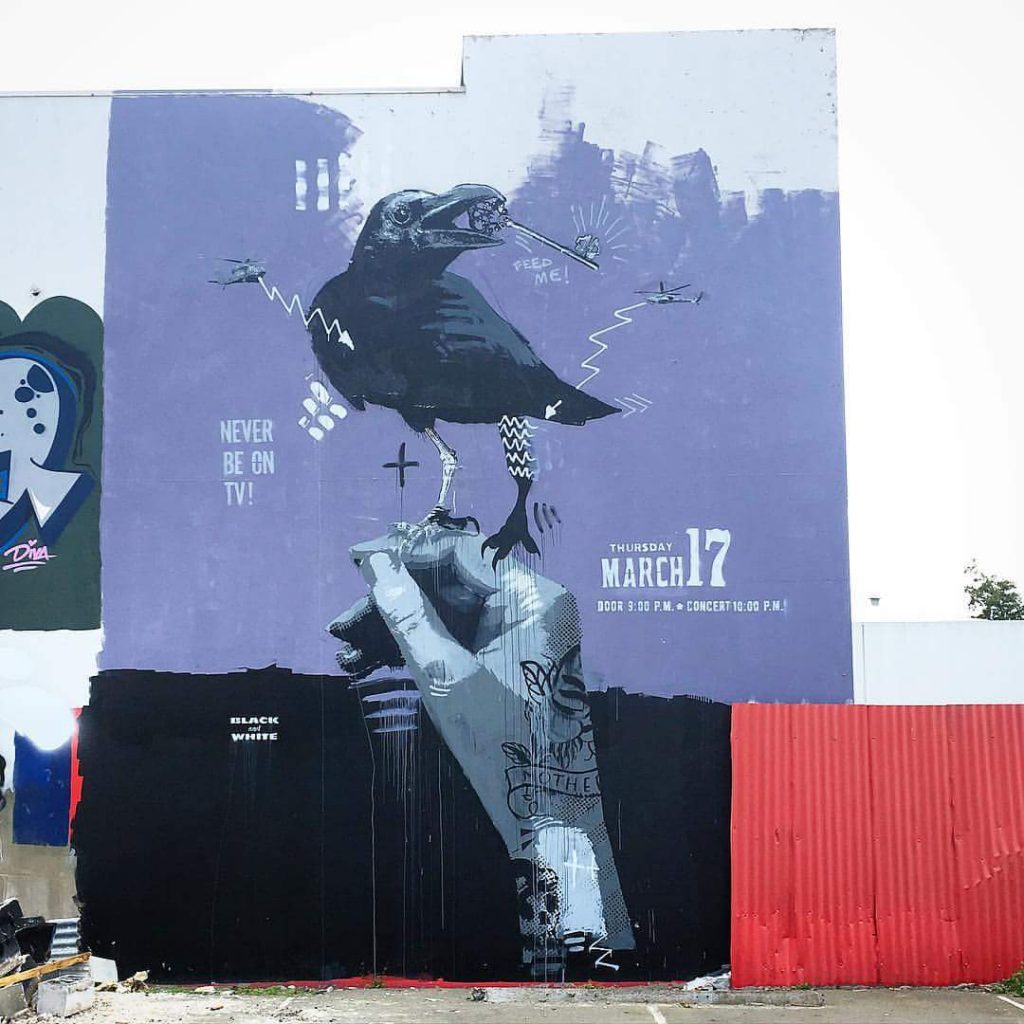
Your use of screen printing, has that been influenced by stencilling, or has it influenced your stencil technique? Do you delineate between the two? Because they form big parts of both your public and studio work…
A screen print is just a stencil essentially, just a different application, pushing the ink through instead of spraying it. But I worked as a graphic designer for a screen print company for a while, so I got the basics of splitting my image, then breaking down that image further for t-shirts and stuff. I didn’t really think about using it in my art work until later on, when my wrist was killing me from cutting stencils, so it just came from a negative really. It has become a main feature of my work, the main detail is in the screen print and I will then stencil behind it, if that makes sense. I also use kind of a grungy approach to make a screen, I wouldn’t use it commercially, like some bits wash out when you are trying to hold it, it’s quite a back-yard process…
As a stencil artist, do you have that feeling of inadequacy around can control?
I’ve always used stencils and relied on stencils, so I’ve tried a little bit but I’m not very good with a spray can. You watch people do it, like Wongi and Yikes, and it’s like, how they can do that! In my past I would do pencil or charcoal drawings, so I’ve got that drawing background, but it’s just another thing, even with a stencil sometimes, it’s hard to get the effect you want…
With your use of digital approaches, how much do you find that you draw in the ‘old-fashioned’ way now? Do you try and keep that habit up or have you found it less necessary?
I used to do it lots, just because that’s where it started for me. But even with my sketches, you can hardly tell what they are now, they are just quick scribbles. I would like to bring it in more, it would be like going in a circle, because the roots of what I do come from drawing, I used to do pictures of people’s dogs and kids, they would commission me to do that, and that’s where it started. I worked for an architect as well, way back, drawing renders of houses and stuff, so it has all come from that…
It has always been there?
Yeah, but I’ve found other ways to do it, I don’t know, I guess it comes from that experimental approach of every time I do something, I try something new, and it has been replaced. I always have my tablet, and I always draw, but it is straight onto the screen, I guess it’s the way it is going….
How did the show at Fiksate come about?
It is exciting for Fiksate to be in town now. It is really cool to see where it started and where it is heading, it feels like a big step up. It’s a really cool space and I really like what all the guys are doing there. They are also really nice people to deal with, and I guess that’s the main reason. It fits my work perfectly too, as an urban contemporary space.
As a specialised space, it must be helpful to not have to compromise, or to have to put extra work into finding and transforming a space. How does the experience with Fiksate relate to previous experiences?
My original thought for this show was to have a big warehouse, and to run it all by myself, but working with Fiksate, I can focus on the art and not the space and the marketing, they are taking care of that. I think Yikes said the same, it’s nice to focus on the art for a change, because there is a lot more that you don’t think about behind the scenes…
All the little stuff, right? A lot of urban artists are using alternative spaces, like DSide and Extincted, where he made a fake gallery, or the Underbelly Project in the subway tunnels of New York, or Hanksy’s (now known as Adam Lucas) take-over of an empty Los Angeles mansion, was that your thinking around a warehouse space?
Yeah, absolutely, you always want to push your work and display it places that blur that line between inside and outside worlds…
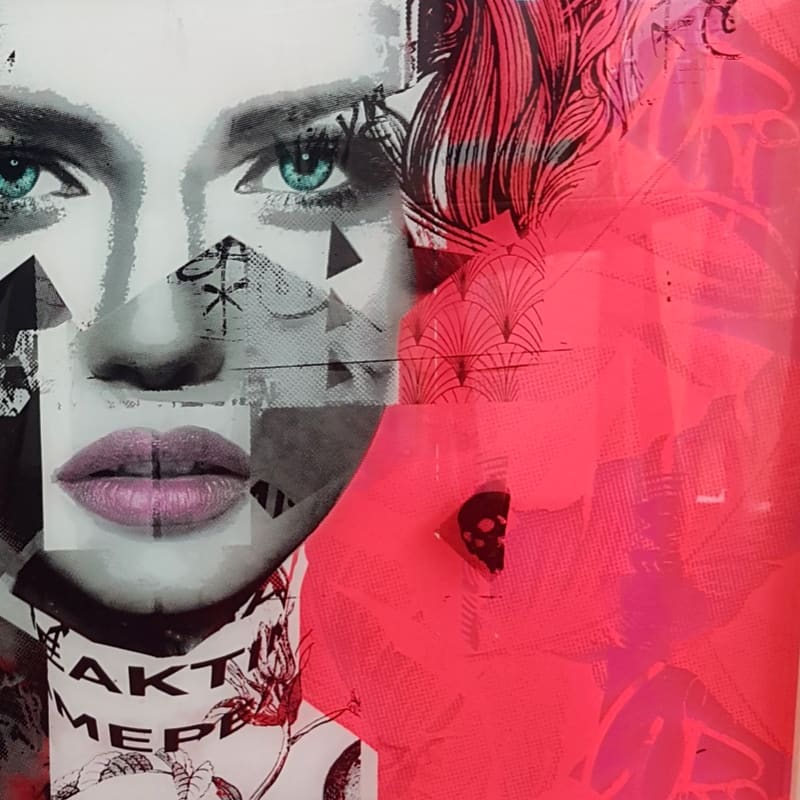
Blurring that distinction between gallery and urban spaces?
Yeah, for me, I really want to show how I can tie together all the elements of my work, the outside works, the studio works, the sculptural elements that I am really interested in. Like, how Vhils makes the image out of the wall, that really interests me…
The idea of urban excavation…
Using what is there and building on that…
The last few years have been pretty crazy for you, right? Your work was included in the Australian Stencil Art Prize touring exhibition, and despite not being at all comfortable, you were featured on a reality television show, what has been the most unexpected thing to happen over the last few years?
Being on The Block! I hated it, aye! I was so nervous! I hate the idea of it, but I like pushing myself outside of my comfort zone because if I don’t, I don’t feel like I’m going anywhere. So, it was a good way to meet people and push my brand out there…
It is important to help grow your profile, but a show like Dopamine will ultimately be more important in terms of your artistic development, a cohesive body of work is a more important proposition than just putting your name out there, right?
I suppose so, yeah. Like we were saying before, pulling together all these ideas I have and trying to show them in one body of work, and, as opposed to sending bits out, or working on this project for this show, it’s different. It has consumed me for a few months, it is all I have been doing…
I assume you can see the light at the end of the tunnel now, and for someone like you, are you straight into the next thing, or do you take a step back and relax?
Nah, I’m onto the next thing. I’m always thinking of what I’m going to do next. I’ve got a couple of murals to do and commissions to work on, and of course I will be trying to develop the sculptural stuff…
What sort of experience have you had working outside of Christchurch? Do you see that as an inevitable and exciting pathway?
I haven’t done that many street works outside of Christchurch and I would like to, just to get out and see more of New Zealand. I would like to do that more, so it’s been a goal of mine to make contacts over the last six months. I am also looking at maybe Australia, and approaching a few galleries there to do some stuff…
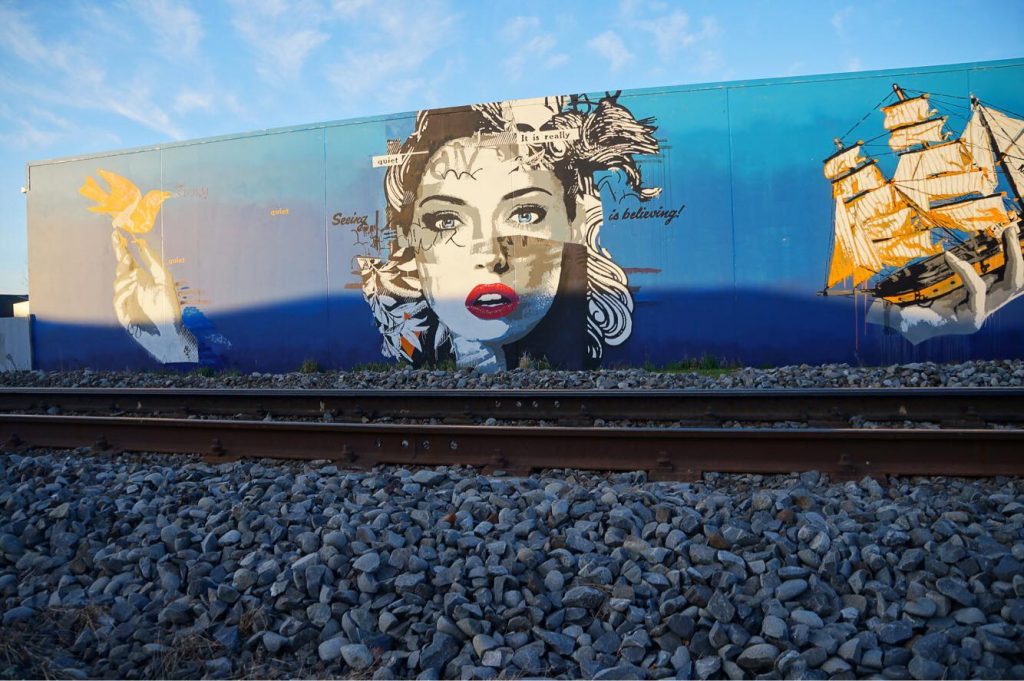
Have you looked at the festival circuits? There seems to be a new event every month, and in increasingly surprising places, so it seems like it could become a more viable option, right? With the likes of Street Prints, Sea Walls, and various other independent events, you could potentially be all over the country…
I haven’t been a part of them, but I would like to, I just haven’t had the opportunity yet. I haven’t really pushed it though, so if it comes it comes about, I will just say yes to everything, although that’s how I ended up on The Block!
I guess it could’ve been worse, it could have been Married at First Sight, right?
That’s addictive bro!
I can’t say I’ve exposed myself to that addiction yet! I’m fascinated by the different backgrounds of people, and part of your story is your time as a basketball player. Do you see any overlap between playing high level sport and making art? I know a lot of people might not see that connection, in fact they are often set up against each other, but I’ve always had a relationship with sport as well, and I’ve always thought about the aesthetics of sport. Basketball in particular has that mixture, with the branding and the visual identity, but then as well, the physical performative element of sport and the repeated perfection you search for, searching for your stroke when shooting, your handles of the ball, did you ever think about the connection between the two? I know you kind of moved between the two rather than occupying both, but do you see that connection?
Yeah, I definitely do, I always think about how I got to where I am as an artist, and my former career as a basketball player. I have always had an addictive personality, and if I do something, I want to do it as best I can. I did that with my basketball, and you end up training three times a day, it consumed me. I loved it, it was all I did. But then I don’t know, I stopped, I had kids. Whenever I was on basketball trips I was always drawing. I never had a style, but I was always drawing cartoons and typography, and then as soon as my basketball stopped, my art career took off. I always had my design background, or trade I suppose, and then I put all that hard work, that training mentality I took from basketball and I applied it to my art making, and I just didn’t stop doing it. I wanted to learn new techniques and master them, just like you perfect your skills in sport. Like you said, the aesthetic side all links together as well, the branding and design work and the aesthetic side of sport all work together.
Speaking of that visual branding in basketball, do you a team that you really like their branding and visual culture?
I like the Golden State Warriors and how the logos went from being eighties-styled to being really colourful, back to being really simplistic. As a kid I used to draw all the logos and laminate them and stick them on my wall…
I did that as well!
I suppose that’s the process, the aesthetic side of it. I like the singlets as well, the design of singlets, how they have gone back to really simple concepts, with bold colours…
To finish, what can people expect from Dopamine?
I can’t compare it to my last show, but I kind of see this show as a big progression from that show. My finishes are different, it’s just a lot different really. It’s more experimental I suppose, I see it as a stepping stone for me to show some of the stuff I want to be doing. There are quite big pieces that I have been working on, and a few more prints. I’ve only done one print before, so there will be a few more prints…
Prints are accessible, which is why urban artists have embraced them. Have you worked with a printer to get the standard you want? I imagine it is really important to get the right image quality and replication, especially since you have such an interest in surface textures and finishes. Was it easier because of the digital rendering process?
I kind of mix them together a little bit. The prints are a bit of digital and screen print, so there is that tactile feel. That’s something that interests me as well, from that design perspective, the combination of the digital and the real. So, it should be quite interesting, no one print will be the same…
I’m sure they will be popular! Thanks Joel, good luck for the show!
Cheers!
Dopamine opens 5:00pm on Friday, March 15th, at Fiksate Gallery, 165 Gloucester Street, running until April 25th.

